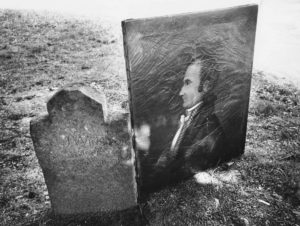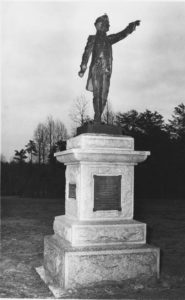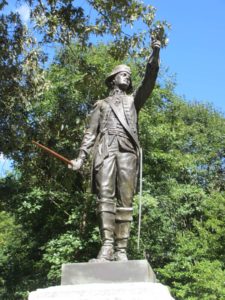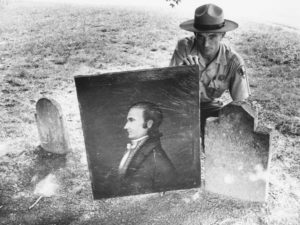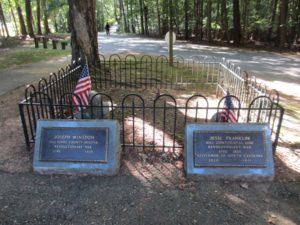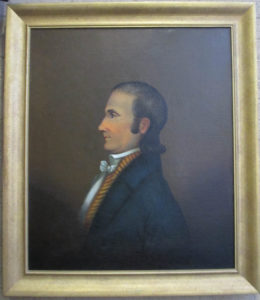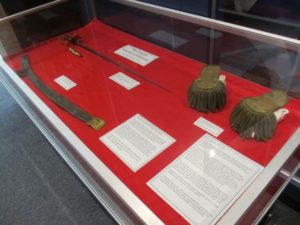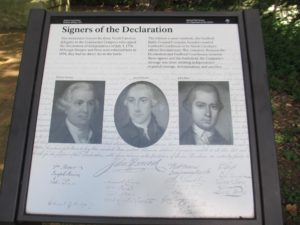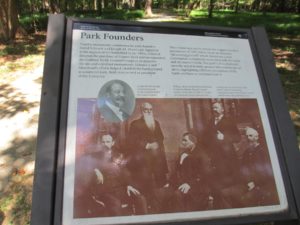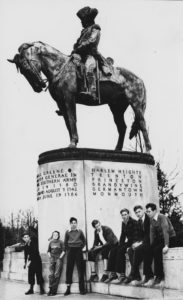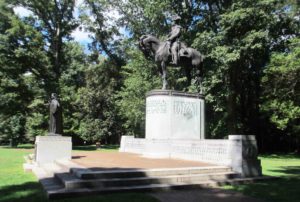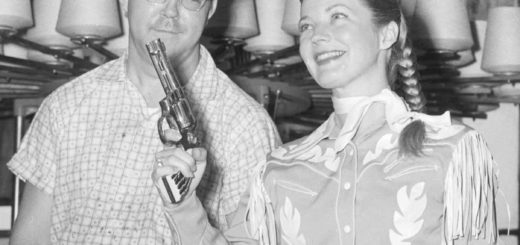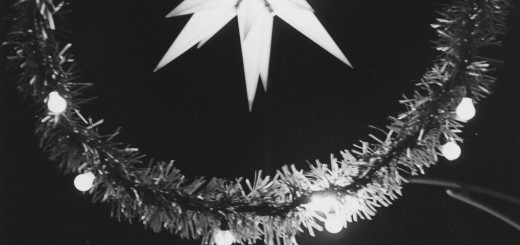Sometimes, to learn more about the namesake of your city, you have to take a road trip.
And that is the case if you want to learn about Joseph Winston, the man for whom the town of Winston (which later became Winston-Salem), was named.
Guilford Courthouse National Military Park is located at 2332 New Garden Road in Greensboro, N. C. The park commemorates the Battle of Guilford Courthouse which took place on March 15, 1781. Nathanael Greene was the commanding general of the Continental Army’s Southern Department. His opponent was Charles, Earl Cornwallis.
The battle is well-explained with two films that run regularly in the visitor center at the park. One film is a reenactment of the battle, complete with actors in period appropriate uniforms. The second film concentrates on maps to help explain the battle lines and placement of the troops. There is a self-guided auto/bicycle/walking tour that travels through the battle lines, the site of the first Guilford County Courthouse, and the many statues that are located throughout the park.
One of the statues is dedicated to Major Joseph Winston, shown above in 1942 (black & white) and in 2019 (color). In the Battle of Guilford Courthouse, Winston commanded North Carolina riflemen on the southern flank of the first line. The plaque on the statue states the following: “In Memory of the North Carolina troops under Major Joseph Winston, who were fighting the Hessians and Tarleton’s calvary near this spot after the continental line had retreated from the field of battle. March 15, 1781.”
Major Winston had already distinguished himself a few months earlier (October, 1780) in the Battle of King’s Mountain when he commanded a part of the right wing of militiamen.
Major Joseph Winston’s portrait is shown next to his grave at the park, held by a park ranger in 1964. Winston’s body was interred at the park in 1906, near the Winston monument. Buried near him is Jesse Franklin, a fellow soldier and a former North Carolina Governor. In 2019 there are new markers for the graves (in addition to the older markers), and the graves are enclosed by a fence.
Winston’s portrait has been restored and framed, and it hangs in the visitor center. There is also a display case in the visitor center that holds several items that belonged to Major Winston, donated by his son. Winston also fought in the War of 1812, and the sword, epaulettes, and sword belt are of that era. Winston made this statement to the General Assembly of North Carolina upon the sword presentation: “I trust that the sword…will never be tarnished by cowardice, but be wielded in defense of my country’s rights and independence.” Following his military career, Winston served three terms in the United States Congress and five terms in the North Carolina Senate.
Some of the other 28 monuments in the park are dedicated to the North Carolina signers of the Declaration of Independence (William Hooper, Joseph Hewes, and John Penn). Other statues are dedicated to the two men who are considered to be the founders of the park, David Schenck and Joseph M. Morehead.
And of course, the statue to Nathanael Greene is in a prominent location on a slight knoll, seen here in 1942 (black & white) and in 2019 (color). The statue was dedicated in 1915 and was located (at that time) near a railroad station. Even though Greene was not victorious in the Battle of Guilford Courthouse, there was some consolation in knowing that the British army suffered severe casualties.
Black and white photographs courtesy of Forsyth County Public Library Photograph Collection. Color images courtesy of Molly Grogan Rawls.

